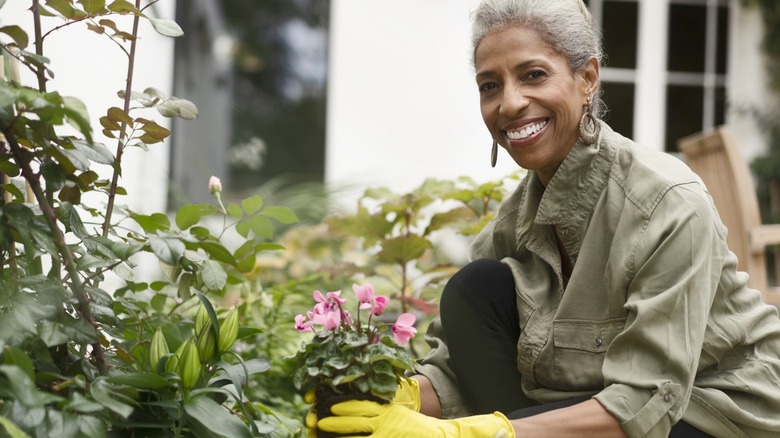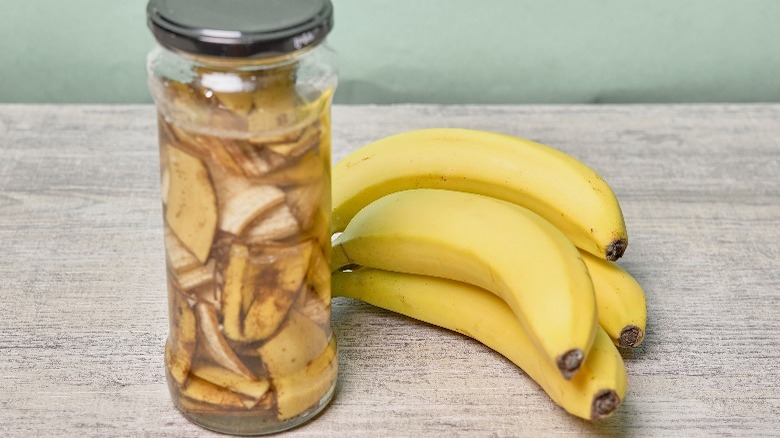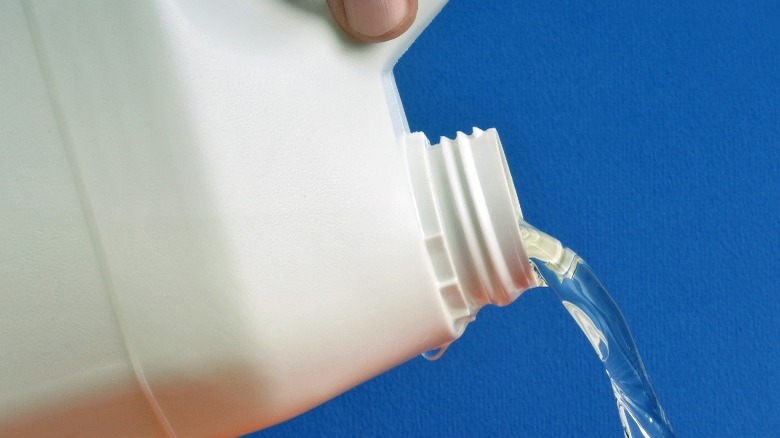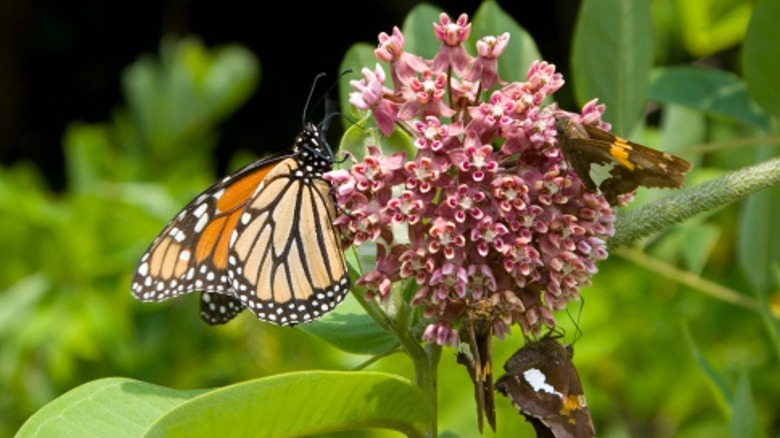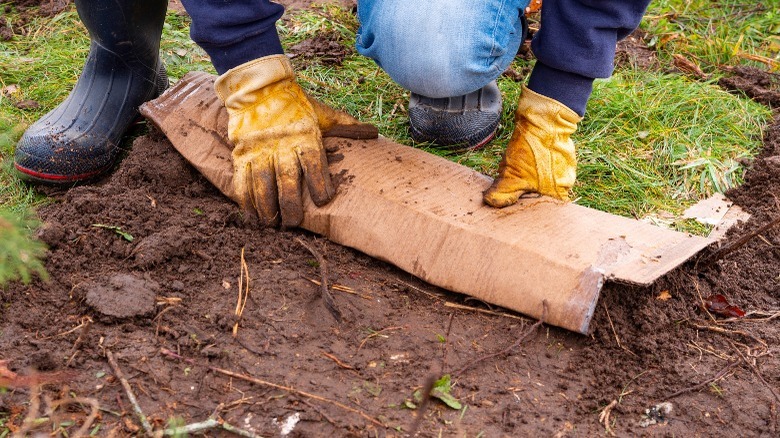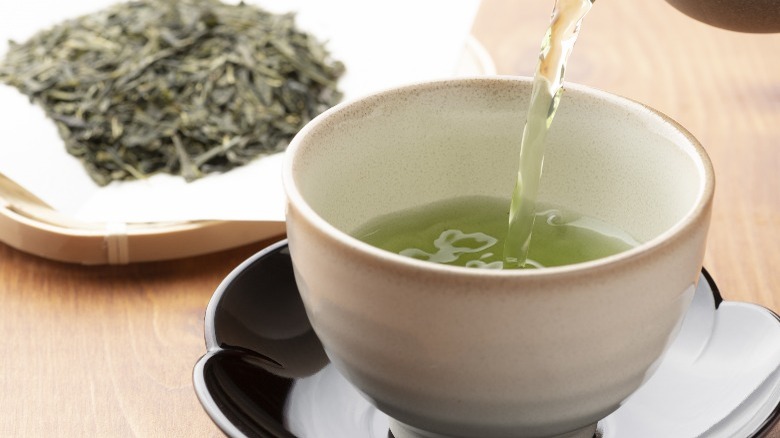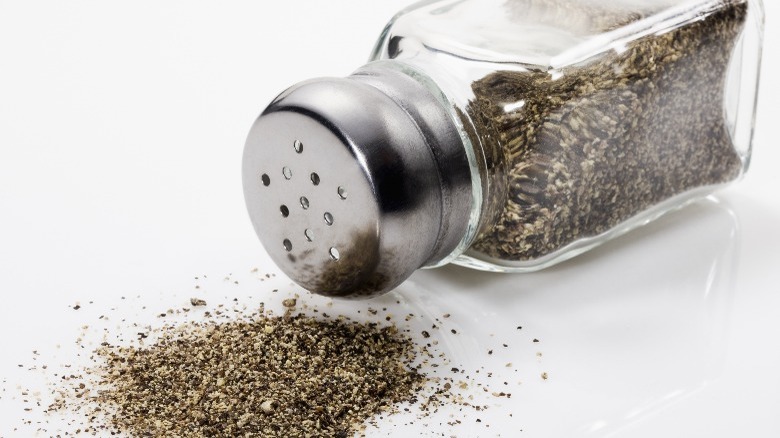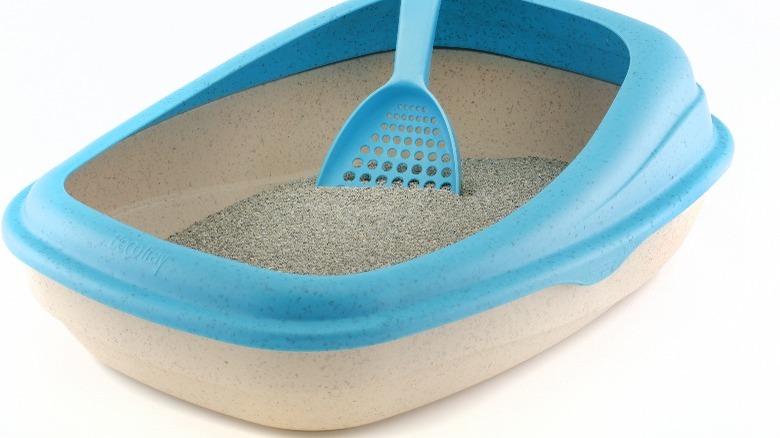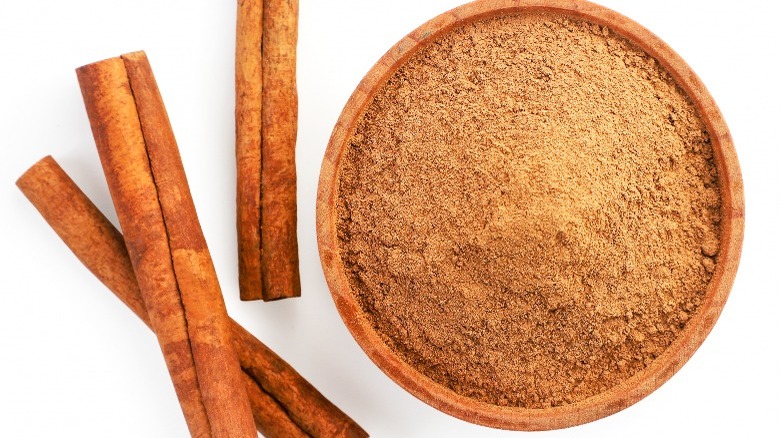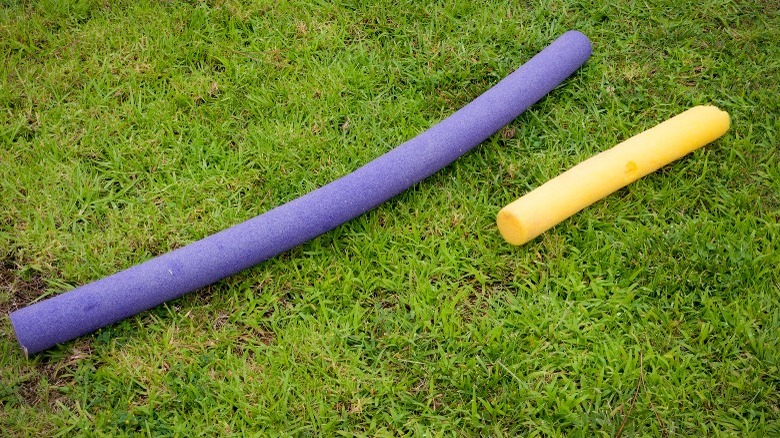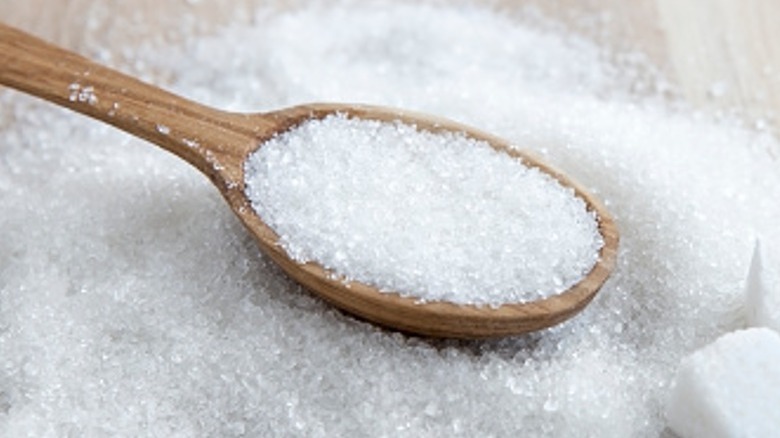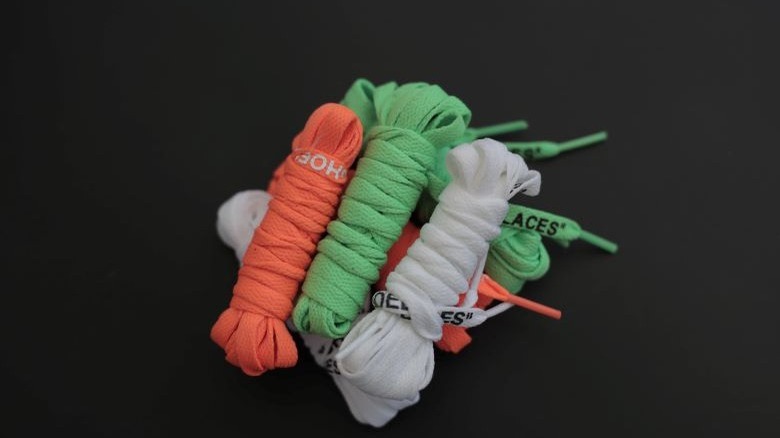Gardening Hacks That Will Give You An Instant Green Thumb
When someone is told they have a green thumb, it's because their plants seem to thrive with little effort. Yet, while many people have a knack for gardening, the hacks make the difference. This pastime can be frustrating, but having a few clever tricks in your back pocket can help, and there are enough to fill up an entire library.
Gardening hacks can be pretty incredible, particularly when they go against common sense. Two interesting examples include watering plants with soda and using a shoelace to water them. Most of the ones below use everyday household items that are less expensive than store-bought gardening supplies. They can be even more effective, too. So even when they seem outrageous initially, consider trying some and then follow the directions for the best results. And when someone exclaims that you have a green thumb, it will be well deserved. Here is what to add to your arsenal.
Feed plants banana peel water
Bananas are an incredibly versatile fruit that's eaten straight, pureed in smoothies, and used to make baked goods like bread and muffins. But this is just the beginning, since the outside is almost as useful as the inside. Countless peels get tossed in the trash, but doing so wastes free plant fertilizer. Folks who toss them into composting bins recognize the value, but for everyone else, those discarded parts can be turned into nutrient-packed drinks for plants. For example, banana peels contain potassium that helps plants defend themselves against diseases and insects like aphids. They also have magnesium for photosynthesis and calcium that aids with soil oxygenation.
To make banana peel water, get a large, sealed container designed to hold liquid. Each time a banana is eaten, cut the peel into pieces, drop them in, and cover them with water. Keep adding peels until it's full. Let it sit for three days, shaking it up several times daily. Then, strain the liquid and pour it into the soil or use it in a spray bottle. Roses, succulents, tomatoes, and orchids especially like this concoction.
Kill moss with bleach or liquid lime
Moss is different from plants in more ways than its appearance. It doesn't spread through root systems; it has more in common with mushrooms because it grows through spores. That means it doesn't need soil, so it can invade stone garden barriers, statues, and water features. Some people don't mind looking at it. Moss won't harm other plants, but many gardeners don't know how to eliminate it permanently.
Moss is more likely to grow in moist, cool areas, and if there is soil, the chances of that velvety green stuff appearing increase when the pH is on the lower side. It can be pulled out by hand or raked up, but that takes forever, and the moss will likely return. The hack for removing it when there is no soil is diluted bleach. Pour about 20 ounces into 5 gallons of water and funnel it into a spray bottle. Spritz it on the moss and give it a few hours to work. By then, the moss can be swept away. Do not use bleach anywhere near the garden because it will kill the plants — try liquid lime instead.
Plant milkweed
Milkweed plants thrive in U.S. plant hardiness zones 3 to 9, are drought-tolerant, and are easy to grow. This perennial is known for its pretty clusters of pinkish-purple flowers that attract monarch butterflies; it's the sole food source for these winged creatures. Milkweed nectar also attracts other pollinators, such as bumblebees.
Aside from the aesthetics and contributing to ecosystems, these hard-working plants benefit gardens in a few different ways. Milkweed is a natural pest repellent because it contains toxic compounds that keep plant-eating insects away. Its nectar also draws in beneficial insects like ladybugs that consume plant-eating insects like aphids. These easy-to-grow, useful plants also have deep root systems that conserve water and improve soil quality. They're not known to harbor common plant diseases and adapt to different kinds of soil. This is one of the easiest gardening hacks out there because almost no effort is needed once it's planted. These pretty, flowering plants deserve a spot in almost every garden.
Learn lasagna gardening
Okay, the words "lasagna" and "gardening" don't go together, but this hack's funny name belies its effectiveness. Here's what the two have in common: The entree is made with layers of food, and lasagna gardening is based on layers of cardboard. It's a fantastic way to grow a garden without needing to dig deep into the ground or pull out weeds, and here is how it works.
Pick a spot for the garden that's flat and rake away any rocks sitting on top. Choose large pieces of cardboard without staples or coatings and lay them evenly on the earth. Sheets of newspaper are also good if there's no cardboard around. Cover this with soil — amendments like compost and dried leaves can be mixed in. The layers can be repeated a few times and must be deep enough for the plants to establish roots. Once the seeds or seedlings are planted, water them and add mulch. The cardboard or newspaper will eventually break down into the soil, provide nutrients, and prevent weeds from growing. Plants that do best in lasagna gardens are ones with shallow root systems, like daylilies and irises.
Pour green tea on raspberry bushes
Raspberry bushes often need nitrogen to grow big and bushy, and a great way to deliver it is through store-bought fertilizers. But a less costly hack is to swap that out for green tea. The leaves contain important nutrients like potassium and phosphorous. This tea even contains tannic acid, contributing to the acidic soil pH these plants love.
This hack works best for people who drink a lot of green tea. Once it's brewed, the loose leaves must be saved. If you use a tea bag, cut it open and remove the leaves. Then take them outside and work them into the soil around the base of the raspberry plants. The leaves will slowly release their nutrients, helping the bushes grow big and strong. You can also leave the leaves steeping in water to use at a later time. Once the water becomes cloudy, pour it directly into the soil, transferring the nutrients via watering.
Sprinkle or pour on pepper
Black pepper is an effective pesticide that can work even better than insecticides. It's environmentally friendly, and protects your garden from more than just pests. Dogs, cats, and other four-footed creatures don't like it either. This spice that perks up scrambled eggs and other food contains piperine, capsaicin, and piperylene, which repels animals and kills insects. It also has antibacterial properties, so using it can reduce the spread of plant viral diseases.
To get rid of insects that live near plant roots, sprinkle straight pepper into the soil at the bases. To make black pepper spray, combine 1 teaspoon with warm water into a spray bottle. Use this on the leaves — insect larvae hate the stuff. Black pepper works best to repel scale, ants, aphids, rabbits, and rats. Bear in mind that natural pesticides like this won't last a whole season and need to be reapplied after a good rain or when they wear off.
Use cola on azaleas
Lasagna, green tea, pepper, and now cola ... yes, there is a theme developing here. This soda hack targets azaleas, who seem to love the stuff. They're perfectly fine with regular watering, but watering them with cola will help them explode with growth. Any cola brand will work, so grab the least expensive one. They all contain sodium, sulfur, phosphorus, potassium, and other ingredients that will amend the soil for these and other acidic- soil-loving plants.
The trick to using soda with azaleas is to only pour a small amount. Measure 4 ounces into a container and pour it right into the dirt, avoiding plants. This can be done now and then. As with these other hacks, be conservative at first and build up gradually if needed. Cola's acidic properties also make it an excellent addition to composting bins since the sugar speeds up the process. An open can of sugary soda can even be placed in the garden to kill insects. They'll be drawn to the sweetness and will fall in and drown. Buh-bye.
Try adding some kitty litter as a soil amendment
Homeowners and renters who don't own cats often buy kitty litter to sprinkle outside on icy sidewalks, but it can also be used in gardens and houseplants. It has air pockets that help retain water, and it works especially well in plants that need aeration and proper draining. Succulents and bonsais do well with kitty litter in their potting soil, but not any litter will do. Stick with calcined, clay-based, non-clumping litter that doesn't contain fragrances or chemicals. And never add litter that a cat has used. Any of these can kill plants.
When creating a mix for potted plants, use a ratio of 1:1 of kitty litter and potting soil. To amend sandy soil for outdoor plants (especially if a drought is coming,) pour in a cup beneath each plant, but for larger shrubs, trees, and rose bushes, use about half a 25-pound bag. Flowering bulbs also do well with kitty litter, with a 25% to 50% concentration.
Add some cinnamon to help plants thrive
Cinnamon is another spice that serves a few different purposes in gardens. It can be used to keep away unwanted visitors like insects, prevent diseases, repair wounds, and act as a rooting aid. Like pepper, cinnamon has a noticeable scent that discourages insects like ants from taking over. Simply sprinkle it around the base of the plants in the same way as pepper. Cinnamon's anti-bacterial and anti-fungal properties are also well documented by the National Institutes of Health, and it has been historically used to treat infectious diseases. This means that a dash of cinnamon can promote the healing of plant cuts and wounds, too. Once a viral disease takes over a plant, there might be no cure, but cinnamon can be used as a preventative measure.
For example, to protect seedlings from contracting diseases, you can sprinkle the spice on the soil where it's planted. This barrier can be the protection these young plants need to survive. Gardeners who propagate plants also often dip the roots in cinnamon before planting them, protecting them from fungal infections and ensuring the roots don't rot. It also acts as a rooting hormone, increasing your chances the plants will grow into maturity.
Destroy weeds with vodka
One might think this is an expensive way to kill weeds, but it gets diluted with enough water to make it a reasonable proposition. Made from fermented potatoes and grains, vodka averages 40% alcohol that can be fine in a cocktail, but deadly for stubborn crabgrass. Keep this stuff away from other plants, though; vodka is non-selective and will kill desirable plants, too.
To destroy weeds with vodka, add 1 ounce of vodka for every 2 cups of water and drop in a bit of dishwashing soap. Spritz it on the weeds on a hot, sunny day, and give it about three days to work. Once the weeds are burnt and dead, they should come right out of the ground.
If vodka costs are a concern, here's a comparison with store-bought weed killer spray. Ortho GroundClear Super Weed & Grass Killer is about $27.99 per gallon (or 3.79 liters) on the manufacturer's site, is premixed, and comes with a spray wand. A 1-liter bottle of McCormick Vodka sells for $9.99 on Wine to Ship. Do the math, and it turns out that using vodka can be less expensive.
Use pool noodles for protection
Growing delicious fruits and vegetables is a labor of love, and it can be quite disappointing when they get damaged. Fragile plants can also be susceptible to getting eaten by animals, so they must also be protected. That's why gardeners construct cages to guard them, plus stakes and trellises to help them grow. But they can get wounded when the plants and their bounty contact the unyielding metal wires.
Pool noodles can save the day because they're incredibly flexible and soft enough to provide shields. They come in thin and thick diameters and different lengths, so pick the ones that best fit the cages or trellises. Do not use ones made with polyvinyl chloride (PVC), though, because they contain chemicals that could be harmful. Customize safe pool noodle pieces with a utility knife and place the noodles where they need to be. Secure them with gardening ties or string, and you're done.
Apply sugar or molasses on stubborn lawn weeds
This second sustainable weed-killing hack is best for lawns and uses sugar or molasses. This works differently than vodka because it doesn't target weeds. Instead, it strengthens the grass. That's because sugars cause it to seek out nitrogen. This toughens the blades while limiting the weeds' access to nutrients, snuffing them out.
There are a few ways to use sugar to fertilize a lawn, and powdered or granulated both work. For the first method, pour the sugar into a lawn spreader and start walking. Use 4 to 5 pounds for every 10 square feet, water the area, and add fertilizer on top. To use molasses, mix 2 cups of that into 10 gallons of water and apply it with a manual sprayer. Since this uses a lot of sugar, concentrate this hack on the most problematic areas. If you have a patch of grass riddled with weeds, focus your resources there.
The things to remember when using sugar or molasses on lawns are to avoid contact with plants and to apply these weed killers on warm, sunny, spring, or summer days. Don't oversaturate the ground, and remember that sugar is not a substitute for regular fertilizer.
Water plants with shoelaces
This is an interesting hack that seems to work through magic. It uses shoelaces to water plants, a reliable way to keep those potted friends hydrated when the owner is out of town or too busy to be bothered. The laces must be made from cotton and be the proper length to be usable. Once they're in place, they act like water-delivery systems. The laces act like soft straws, moving the water through the absorbent cotton to the roots.
To set up a shoelace plant-watering system, tie a small rock around one end of the shoelace. Place a water container next to the potted plant and elevate it with an old planter or something else that will raise it to a higher height than the plant. Drop in the weighted end of the shoelace into the water and stick the other end into the soil, or have it hovering just above the dirt (you can drape it over a lower leaf.) The force of gravity will cause the water to slowly move through the material to the plant. It's kind of like a drip irrigation system and is pretty cool to watch.
Change the color of hydrangeas with apple cider vinegar
Hydrangea blooms can be compared to pom-poms because of the large, colorful, and fluffy-appearing flower clusters. These can be white, blue, or pink. The different colors come from not only genetics but the soil's pH level, and it's possible to change the hue by amending the dirt. For example, adding vinegar to the soil can make pink ones turn blue. Gardeners and florists use this hack for different reasons, and it operates on the simple principle of changing the soil's pH without harming the plants.
But before attempting this, check the soil's pH level to ensure the plant won't be harmed. Some hydrangea strains cannot turn blue, so if the pH is at 5.5 or below, leave it be. Nikko Blue, Endless Summer, Ayesha, and Purple Tiers respond well to vinegar. To make the color change, pour a cup of apple cider vinegar into a gallon of water. White vinegar might cost less but is harsher and could damage the plant. Pour the mixture into the soil, and don't get any of it on the plant. Then, set a timer with a reminder to do this every two weeks. The flowers should turn blue after a few months.
